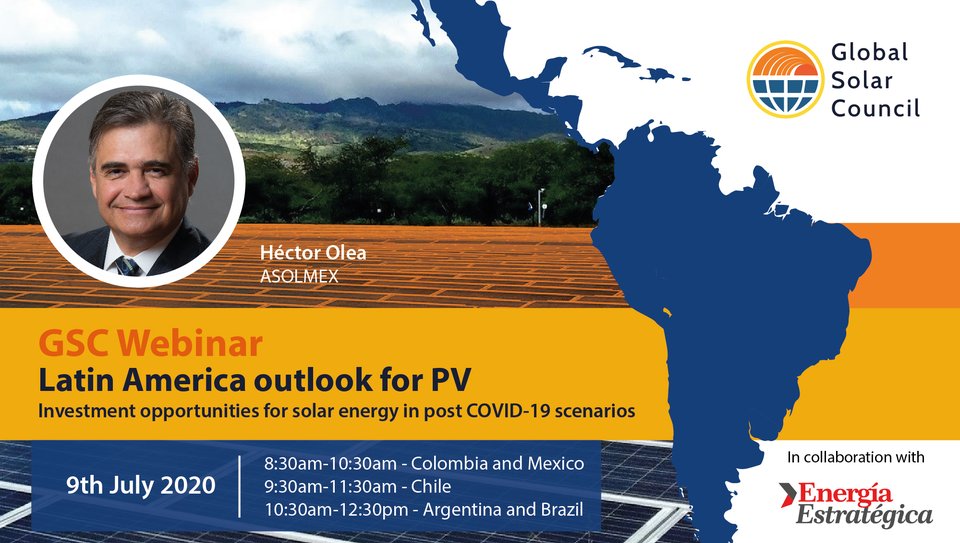Press Release
Private investment may take Mexico to 7 GW of installed solar capacity by year-end

Hector Olea, president of Asolmex, confirmed that 2 GW of solar projects are being built and should be ready to start commercial operation by the end of this year or the beginning of the next. However, getting connected to the grid will be a big challenge following changes in policy and regulatory frameworks issued by the federal government.
Mexico currently has 5,687 GW of solar capacity in operation, which represents more than US$8.85 billion in direct investment, according to the Mexican Solar Energy Association (ASOLMEX).

That could be just the starting point for this country to meet its energy transition goals and diversify its power generation mix since industry estimates show that about 85% of its territory receives optimal solar irradiation for use with solar panels.
"Mexico has the potential to be the seventh largest solar energy power in the world," said Hector Olea, president of ASOLMEX, in a webinar examining the prospects for PV in the region. The event – “Latin America outlook for PV: Investment opportunities for solar energy in post COVID-19 scenarios” – was organized by the Global Solar Council in collaboration with Energia Estratégica and provided expert perspectives on important emerging markets (Brazil, Argentina, Chile, Colombia and Mexico).
The head of ASOLMEX suggested that in the first half of 2020 alone private investment could bring current installed solar power to 7 GW.
"When we say that Mexico has more than 5.6 GW, we are referring to a capacity that is already operating and generating electricity on the grid. We are not including the 2 GW of capacity that is being built and could be ready to generate by the end of this year or early next year," Hector Olea told the meeting.
But it’s impossible to set a date for when that goal will be achieved because it will be a big challenge getting new renewable energy parks - considered "variable" generation – connected to the transmission grid following changes in policy and regulatory frameworks brought in by the federal government.
"Now we are going through a very challenging moment, although full of opportunities for sure, in terms of changing regulatory and legal framework," said Olea.
With the new administration in the federal government, there have been "setbacks" in the framework in place after the Energy Reform of 2013/14, and there’s a drive to limit the participation of the private sector in the wholesale electricity market. These include:
- the agreement to guarantee the efficiency, quality, reliability, continuity and safety of the National Electricity System, in response to the COVID-19 epidemic on 29 April 2020
- the agreement that led to the Policy on Reliability, Safety, Continuity and Quality in the National Electricity System of 15 May 2020
- the fact that, as of 10 June 2020, 2018 tariffs for power transmission will be applied to the holders of legacy interconnection agreements for power generation plants from renewable energy sources or efficient cogeneration
These proposed measures have been justified by the argument that "variable" renewable generation brings "instability" to the grid. How to respond to this point of view? To hear the perspective of Héctor Olea, as president of ASOLMEX and as CEO of Gauss Energia, access the webinar slides and recording here.
![Global Solar Council [logo]](/static/images/gsc-logo-horizontal.svg)